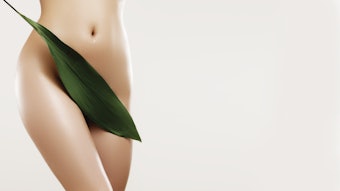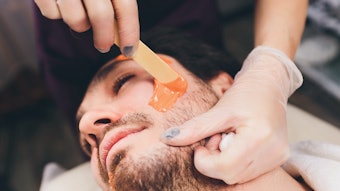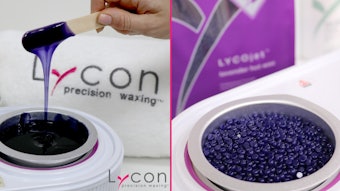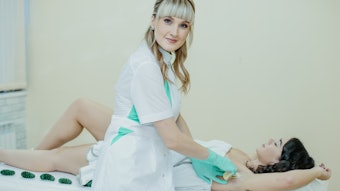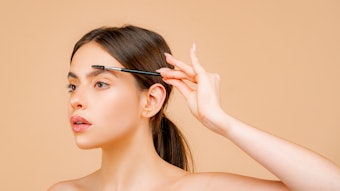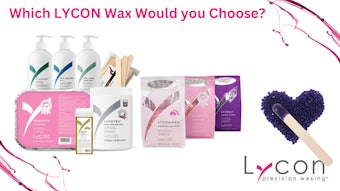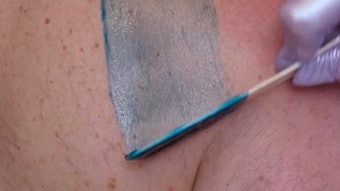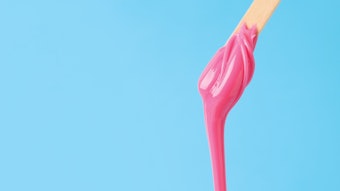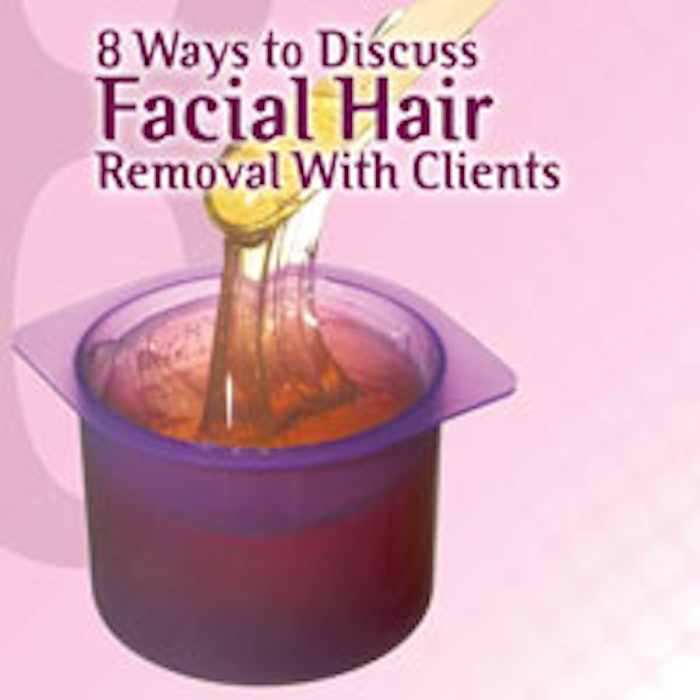
Clients share the latest dish about their careers, relationships and daily life with their estheticians; however, there are beauty issues they may want to discuss, but are either too shy to bring them up or don’t know how to start the conversation. You are the beauty authority in their eyes, so take that opportunity and responsibility to heart when performing your role.
A topic that can be sensitive for many women to discuss is facial hair and its removal. To strengthen and grow your client relationships, it’s wise to be aware of trends and techniques in removal methods that will help enhance their self-image. Clients will appreciate your knowledge and attentiveness to their overall beauty needs. Following are eight ways to engage your clients in conversation about facial hair growth and removal.
1. Female facial hair is an issue.
Women want to talk about their facial hair and find ways to remove it. A 2010 P&G Beauty survey of 6,600 women 18 and older revealed that unwanted facial hair is as big a beauty concern as fine lines and wrinkles. The survey found:
- 56% of women say they have experienced facial hair during the past three months;
- 41% of American women think visible hair (in certain areas) is not socially acceptable;
- 85% of women remove facial hair occasionally; and
- 4% of women remove facial hair daily.
2. Know your clients well.
Familiarity with clients’ lifestyles, daily beauty regimens, time constraints and overall personalities can help you assess ways to better advise them about beauty care options that enhance their self-image. As you build a trust-based bond throughout time, you also learn how best to approach different topics of conversation, such as facial hair removal.
Is the client typically confident, unafraid to try new techniques and open about her personal self-image needs? Or, is she a little shy about changing her appearance and reserved in conversation about grooming and beauty concerns? Understanding clients’ comfort levels when talking about their own needs and wants will provide direction about how to approach issues such as facial hair.
3. Learn more about facial hair removal options.
Knowledge gives you confidence in discussing the issue and builds client trust in your recommendations. Update yourself on the pros and cons of the various facial hair removal methods. (See Pros and Cons of Facial Hair Removal Methods.)
Talk with other skin care professionals about their clients’ facial hair removal experiences, along with their own. Go outside of your area of expertise to solicit feedback and seek testimonials from your peers. Read, read, read—turn to trade magazines, face-to-face trade shows, industry websites and blogs for feedback on facial hair removal methods.
4. Don’t hesitate to open a dialog with clients.
If clients have visible facial hair, they need to know they are not alone, and become educated about safe hair removal choices. Once you’re familiar with your client and understand common hair removal methods, you’ll feel more comfortable addressing the subject. Assure clients that it’s very normal and common for women to experience facial hair growth. Listen closely to how they respond and what they have to say about their own perception of facial hair. Following are some common myths associated with facial hair removal; use them as icebreakers to get the conversation going and help educate clients about the service.
Myth: Facial hair grows back at a faster rate, and becomes darker and thicker after it has been removed.
Fact: A woman’s genes and hormones—not necessarily her hair removal method—usually determine her hair re-growth. After shaving, facial hair may appear more blunt, which can give a perception that it is darker and thicker, as opposed to the appearance of a tapered end. There is no evidence that common hair removal methods cause hair to appear darker or thicker as it re-grows.
Myth: Blond hair is considered fine-textured, and brown or black hair is considered medium- or coarse-textured facial hair.
Fact: To determine facial hair type, rely on the texture rather than the color. By deciding if a client has fine-, medium- or coarse-textured facial hair, you may then discuss removal options that are best suited for her.
Myth: Facial hair removal procedures leave skin rough and dry.
Fact: Many common facial hair removal methods may result in rough, dry skin, but this is often due to the lack of regular exfoliation and moisturizing before hair removal. Work with clients to ensure that their skin is in the proper condition before they undergo facial hair removal.
Myth: Common hair removal creams remove hair from the root.
Fact: Hair removal creams contain powerful ingredients to weaken the hair just below the skin’s surface, so that when the cream is wiped off, the hair comes off where it was weakened. It doesn’t dissolve the root of the hair, so the hair will eventually grow back. Surface contact with the ingredients can cause skin irritation, especially on the delicate facial area. Make sure to provide clients with at-home products if they are planning to use hair removal creams at home to pre-moisturize in order to protect the skin.
Myth: Facial hair removal is painful and can cause trauma to the skin.
Fact: Certain root hair removal methods, such as waxing, threading and tweezing, may be painful and cause irritation for some women. These methods can also break the skin, as the hair is pulled from the root, causing mild trauma.
Myth: Facial hair removal causes visible irritation and redness, so it should be done well in advance of special occasions or going out in public.
Fact: Although some facial hair removal methods may cause pain or irritation, it’s important to work with your client to ensure skin has been pre-conditioned with a proper routine of exfoliation and moisturizing to help guard against the unwanted effects of facial hair removal.
5. Help clients determine their facial hair type.
This will serve as a guide about what methods to recommend for removal. Facial hair type is based on the texture, not the color.
- Fine-textured facial hair can be seen primarily in daylight, and is thin and soft to the touch, much like the skin of a peach.
- Medium-textured facial hair may be more noticeable on the upper lip and can be found on the chin, jaw line and sometimes around the lip line. It is thicker than fine hair, but is still soft to the touch, as on a kiwi fruit.
- Coarse-textured facial hair typically appears randomly on the cheeks, upper lip and under the chin. It is thicker, stiff to the touch and more stubborn to remove, similar to the fuzz on a coconut.
6. Share options best suited for your clients’ lifestyles.
Factors clients may consider in choosing a hair removal method include: the amount of time required, frequency of maintenance, post-procedure condition of skin, cost, level of discomfort and, whether they prefer to remove hair themselves or have it done professionally. It’s important to respect all these concerns.
Cream hair removal products and shaving. These are options for those who want a method that is easy, can be done at home, is inexpensive and offers minimal discomfort. It does require a time investment to make the process part of their regular and frequent beauty regimen.
Electrolysis and laser removal. These are options if you are working with clients who are seeking more permanent hair removal methods, are not overly concerned about cost and are willing to experience discomfort to gain the end result.
Threading. This method is quick and inexpensive, performed by removing facial hair by twisting it between taut cotton threads. Results can last up to six weeks.
Tweezing/epilation. This is a good option if facial hair removal needs are minor, because hair can effectively be removed by tweezing or epilating, as long as the hair shaft is long enough to be grasped with the implement.
Waxing. This is a good choice if clients prefer to seek an in-spa removal method performed by a professional, can afford to spend a little more, want more time between maintenance treatments, can tolerate minimal-to-moderate discomfort and are not shy about having someone else do it. If your spa does not offer facial waxing services, this may provide a great add-on opportunity.
7. Advise clients about maintaining healthy skin before, during and after facial hair removal.
Regardless of the chosen removal method, it is your job to remind clients that their skin should be in optimal condition to keep their smooth, hair-free appearance healthy. Provide a service on your menu that serves to exfoliate and moisturize the skin as a way to prep for facial hair removal. Suggest that clients exfoliate and moisturize using home-care products on a regular basis. To minimize discomfort, advise that they use a protective cream before the procedure. They should always use a good moisturizer following the service and on a regular basis, as well.
8. Focus on your clients’ well-being.
Have a follow-up conversation with clients after they’ve tried facial hair removal. Gathering information on their overall experience and the results will provide you with additional information for future discussions and recommendations.
Above all, be sure to keep the dialog going to make clients feel good about themselves and their appearance. As your clients’ beauty authority, the more knowledgeable you are on all beauty-related topics, the more you’ll be able to share. The trust and respect you create will not only make you feel great about your career, it will naturally help you build your business.
Siân Morris, PhD, is principal scientist, skin care at P&G. Since joining the company in 1992, she has worked exclusively in the area of female beauty care. Morris has focused on the area of skin care, improving consumer experiences and creating skin improvement products across both facial cleansing and moisturization.

